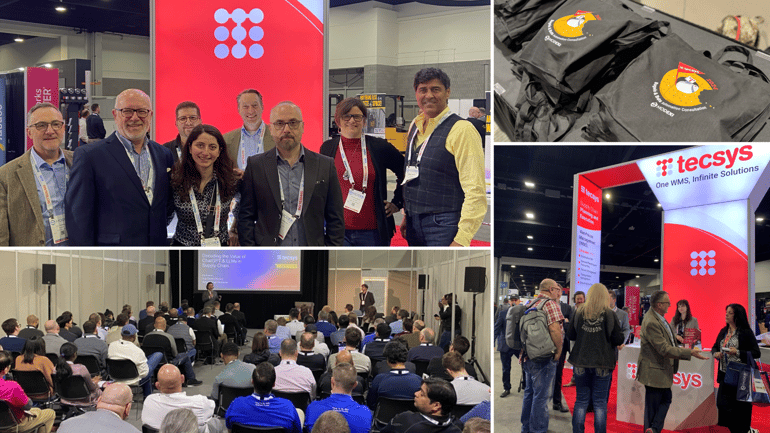4 Key Takeaways From MODEX 2024

Each year during the ides of March, the supply chain community gathers in either chilly Chicago for ProMat — and deep-dish pizza and beef sandwiches — or sunny Atlanta for MODEX, soul food and southern hospitality. ProMat and MODEX alternate years, and 2024 was MODEX’s turn. I attended ProMat in 2023, but this was my first time at MODEX.
From both an exhibitor’s and a spectator’s point of view, I realized that the supply chain world is finally starting to settle into a groove, even if it’s an uneasy, tentative one. Here are some general observations about the event and the overall state of the supply chain industry, based on my conversations with attendees, visiting vendor booths and watching seminars.
1. Automation: fantasy vs. reality
Since the pandemic, the warehouse industry has experienced a huge surge in automation technologies and vendors. The name of the automation game used to conveyors, pick modules, carousels and other traditional-but-dependable technologies. But advanced and enhanced AS/RS solutions and automated mobile robots (AMRs) have burst onto the scene over the past few years. These technologies promise to solve labor shortage problems and drive warehouse optimization.
I sensed that, up until last year, some businesses viewed newer automation technologies as more of a novelty than a necessity and others felt that these solutions were beyond their reach due to some combination of cost, complexity and maturity. As the supply chain industry continues to acclimate itself to these technologies and adoption increases in the mid-market, we’re going to see more warehouses considering modern automation and these technologies becoming as commonplace as the trusty conveyor. This scenario, however, assumes that labor shortages continue to be an issue.
2. Will there ever be a clear winner in the battle of the bots?
In the clash between competing automation tech — automated storage and retrieval systems vs. AMRs vs. conveyors, as an example — no one system will rule them all. That’s because every solution solves a specific problem, and there isn’t as much crossover as typically assumed. Whether you’re looking at traditional automation, cube storage or AMRs, the use cases and feature-benefits are actually more complementary to each other than they are comparable.
What we can expect to see is not so much one type of automation gaining widespread adoption but rather multiple types of automation working in harmony or in different areas of the warehouse. Each solution will serve a specific use case, such as e-commerce fulfillment, case picking and seasonal products. On a side note, with so many vendors offering very similar products within a category — think AMRs or picking arms —industry consolidation seems inevitable. The issue then becomes who buys who and when. This question will likely be on buyers’ minds when they choose one vendor over another.
3. Is the AI hype train running out of steam?
Like automation in the early 2020s and blockchain before that, artificial intelligence is the current hot topic in supply chain. Starting with the release of Chat GPT and other large language models in 2023, AI became the next big thing. Despite an avalanche of AI media coverage, supply chain folks are still trying to wrap their heads around what AI can do, if anything, for their operation.
The reality is that AI has been around for a while and will continue to evolve, but it’s not the magic bullet it’s hyped up to be. To be effective, AI requires high volumes of data — clean, reliable, robust data sets — as well as a clear vision for how to use the data. AI still has a long way to go before it becomes indispensable in the warehouse. Before getting to that point, the supply chain industry has more pressing issues to solve.
4. Digital transformation is the next step
Whether or not blockchain, warehouse robots, AI or the next big thing is on your horizon, when it comes to warehousing in this new normal, the writing is on the wall. To run an operation that can solve the complexity of the modern supply chain paradigm, you’re going to need a robust warehouse management system that can meet supply chain challenges through scalability and flexibility. That means letting go of legacy systems and starting on the path of digital transformation.



